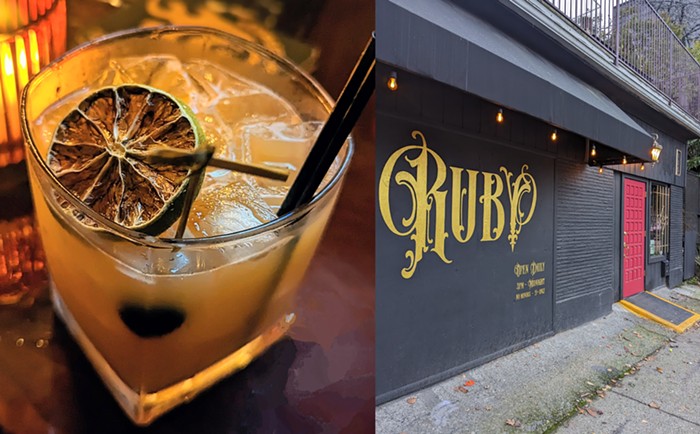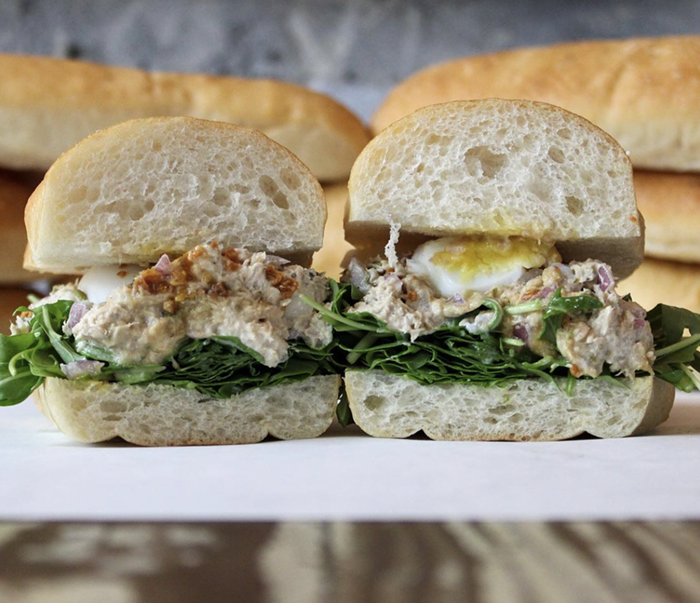The first time my dad told me, "If I could do things over, you'd have been born in Hawaii," I was 14 and there for the first time. So great is his love for Hawaiiana, he ensured the first thing I experienced was a big, steamy bowl of saimin. I've been a metaphorical and semiresidential island girl (and saimin slut) ever since.
Saimin is a state dish of Hawaii. Websites are devoted to it. It's also one of the best examples of Hawaii's "postcontact," polycultural heritage. Chinese, Japanese, Portuguese, Korean, Filipino, and Puerto Rican immigrants arrived in waves to labor on Hawaii's sugarcane and pineapple plantations from 1852 through the early 1900s. Saimin—basically, ramen on steroids—came about during that era, when workers needed an inexpensive, nutritious meal to keep them busting ass for their evil overlords.
"Saimin" is thought to be a corruption of the Chinese words for "thin" and "noodle," or possibly of "ramen," the generic Japanese term for noodle soup. The dish is essentially Chinese wheat-and-egg noodles in a Japanese dashi broth; the toppings traditionally include char siu (Chinese barbecued pork), kamaboko (fish cake), egg, green onion, and bok choy. Variations might involve linguica or Spam. (Pacific Islanders' obsession with the latter has nothing to do with their ancestral predilection for "long pig," or human flesh; it's a remnant of WWII, when canned meat was a soldier's dietary staple.)
There's debate as to whether saimin originated in the field or as a post-work communal meal, when plantation families threw in a little of whatever was on hand. It went the fast-food route after debuting at ball games at Honolulu Stadium, and today, Hawaii is littered with saimin shacks. Saimin is even served at McDonald's.
Since many Hawaiians have ditched the sun for the Pacific Northwest's jobs, universities, and lower cost of living, saimin can be found here. Unfortunately, the versions from Kona Kitchen and Kauai Family Restaurant, while authentic, aren't great (though for full-on local style—tita's talking story, Formica tabletops, keiki and their toys underfoot, karaoke—these places can't be beat). It's in the adaptation of a dish that's already an adaptation that Seattle does it right. Case in point: Lorenzo and Reiko Rangel's nine-month-old Aloha Ramen in Greenwood (8102 Greenwood Ave N, 838-3837). They were born in Japan, but Lorenzo, a cook by occupation, was raised on Oahu. After moving to Seattle two years ago, they purchased a ramen house. The brief menu is classic Japanese ramen-ya: noodles, fried rice, gyoza. But some dishes are tweaked island-style.
"I import saimin noodles from Hawaii, and my ramen is a Japanese-Hawaiian hybrid," explains Lorenzo. The result is a deeply gratifying kalua ramen ($6.50): a tangle of eggy, spaghetti-thick noodles topped with smoky braised shreds of pork and silky cabbage. Lorenzo makes only enough chicken and pork stock each day for 100 bowls. A sign on the door apologizes profusely for this fact, a reflection of the sweetness of this family-style joint.
Wallingford's Hawaiian Breeze (1917 N 45th St, 632-2583) makes a great version of saimin, with veggies, Spam, linguica, or barbecued chicken ($6.50–$8.95). The bowls are massive, and the broth is ocean-savory (with cabbage and carrot, too), but it's the shoyu-and-ginger-marinated, charcoal-tinged bird that conjures up many a beach-park picnic.
Then there's the unlikely saimin of upscale West Seattle restaurant Spring Hill ($10; 4437 California Ave SW, 935-1075). Despite chef/co-owner Mark Fuller's big-shot status as one of Food & Wine's Best New Chefs of 2009 and two-time James Beard Award semifinalist, he's a homeboy at heart. Born in Seattle to a Japanese mother raised on Kauai, Fuller spent childhood vacations and his hungry, formative high-school years on the island, then returned to cook there for a time in 1992. He added saimin when Spring Hill started doing brunch in late 2008, because "a bowl of hot noodles is a soul-satisfying breakfast or lunch."
In keeping with Fuller's passion for craftsmanship and local ingredients, the noodles are made and cut by hand, and the obscenely rich pork-and-ham stock takes two days to make. The result is served in a bowl the size of a tureen and loaded with thin, toothsome noodles; chunks of smoked, slow-roasted pork belly; a halved "six-minute egg"; green onion; shredded greens; kombu; and two giant fried fish cakes (cod, rockfish, crab, and shrimp) handmade by Mutual Fish. The accompanying house chili sauce is slurpable on its own. In short, it broke da mout. Spring Hill's saimin—hands down the best in the city—will leave you feeling sleepy, satiated, and like Hawaii isn't so far away after all. ![]()



















